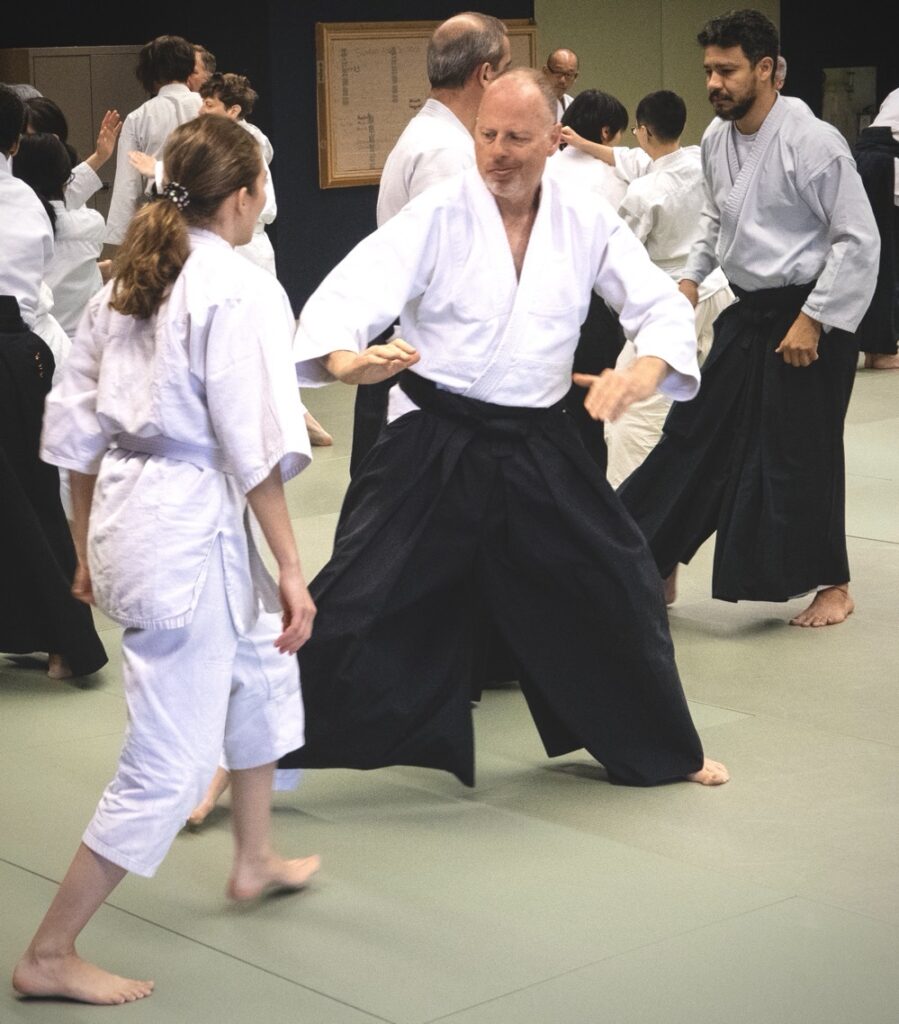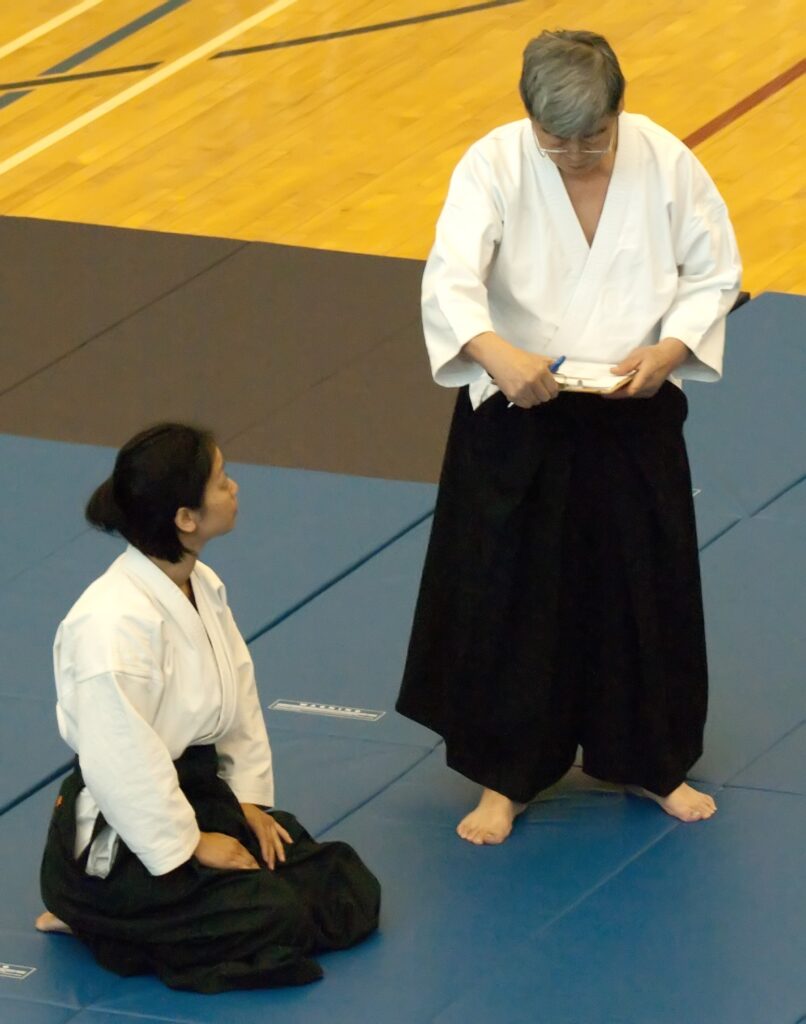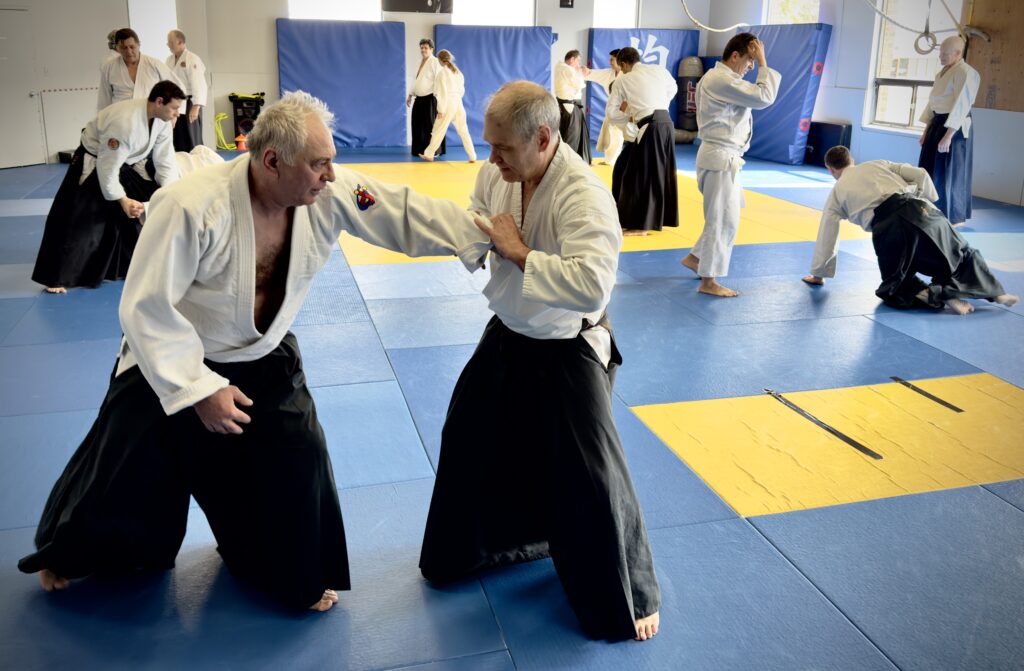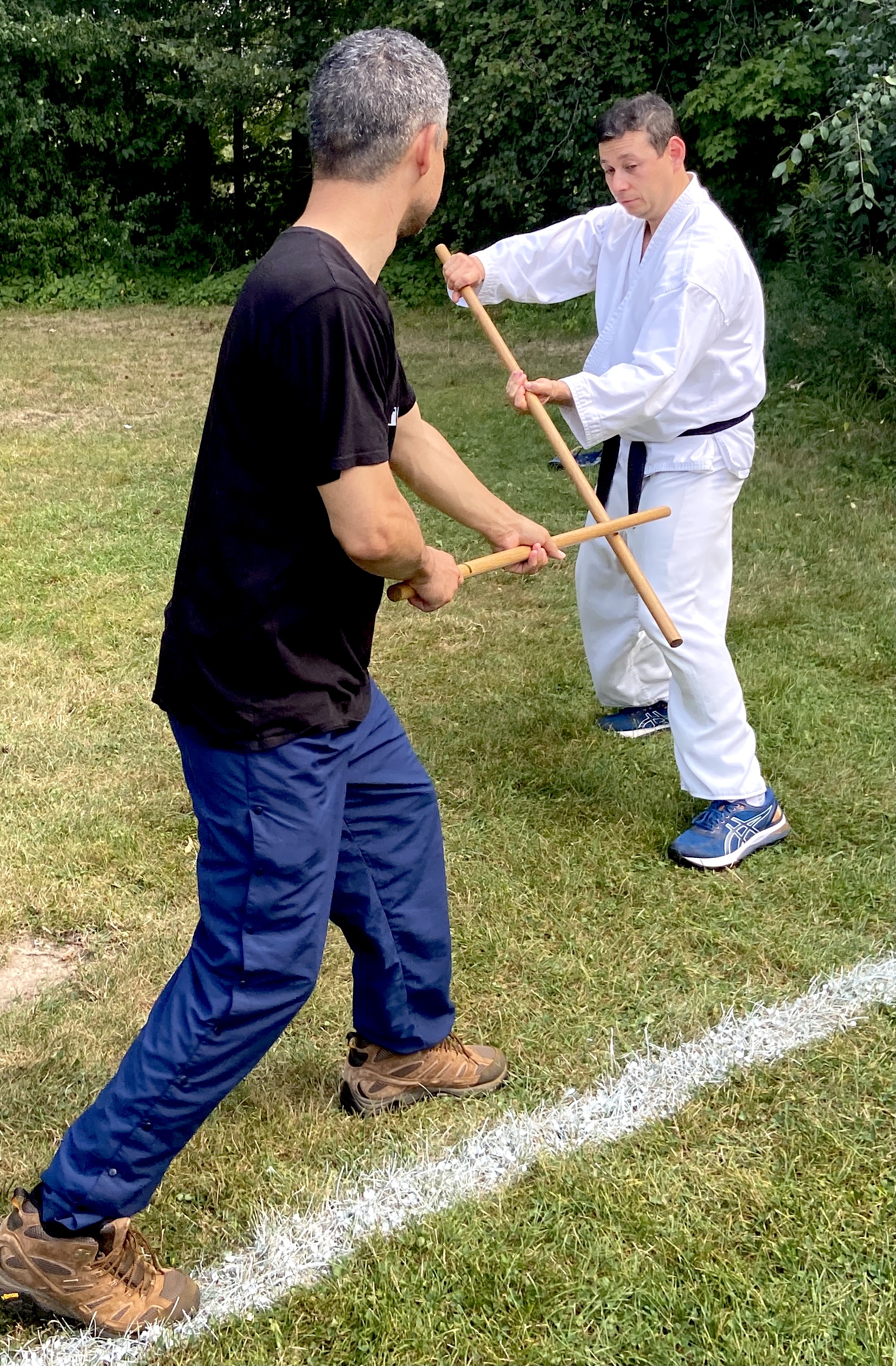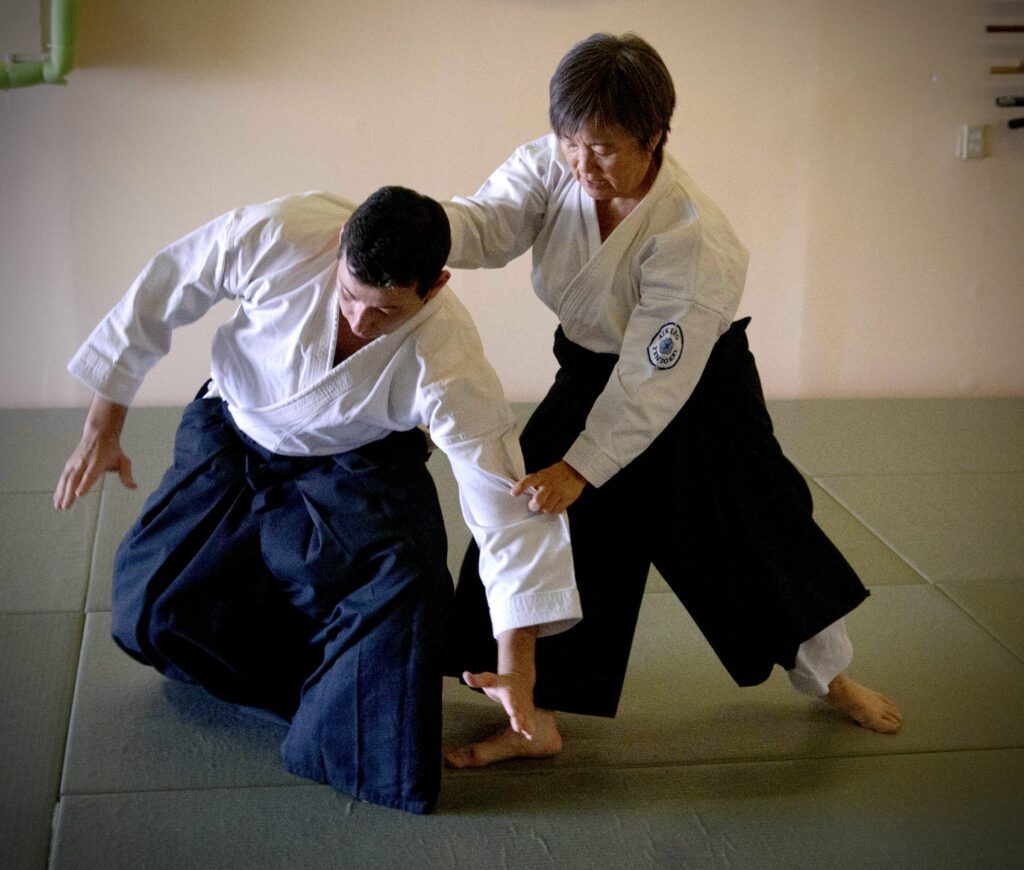
For such a foundational practice of Aikido, I think that many students, even more advanced ones, don’t fully grasp the spirit of ukemi.
I practised other martial arts besides Aikido. For them, ukemi was what happened to you when you were defeated. It didn’t really matter how you did it, apart from trying to minimise the damage to your body.
One of my favourite quotes from Kawahara-sensei was that “Your technique will never be better than your ukemi.” Ukemi is at the very heart of Aikido practice, the ying to the yang.
A few points:
• Ukemi is a continuum. It begins with uke’s intention to attack, a correct and sincere attack, the resulting body relationship and the final movement leading to a fall or a pin. Each part is crucial.
• Ukemi is a vital aspect of learning. Without good partners, you won’t progress. This is particularly so because many Aikido techniques are complex. If your uke is resisting or uncooperative, you are not getting a chance to experience the technique. It’s not uke’s job to make you “prove” that the technique works, but to partner with you in learning it.
• Ukemi is for safety. I have seen bad injuries result from bad ukemi. Protect yourself with correct ukemi.
• Don’t be stupid. Grabbing nage’s wrist with an ironlike, vise grip and stiff arm is just asking for injuries. It’s not a smart attack in any context, inside or outside the dojo.
• Be responsive. With wrist attacks, hold the wrist firmly but in a relaxed way, so you can react. Your arm should be as flexible as a rope and your grip as soft and connected as a knot. As you become more experienced, this kind of grip will enable you to “read” nage, to feel what’s coming in terms of timing and movement. This is self-preservation 101, a basic self-defence skill.
• Ukemi is active, not passive. Uke is not the victim of practice but a participant in it. Uke should follow actively, not limply or stubbornly. Don’t be lazy, wishy-washy or stiff. Uke should stay glued to nage, continually trying to maintain a surviving position, moving naturally according to Aikido principles, blending with nage.
• Advanced students may run through various possibilities for kaeshi waza mentally as they follow a technique — WITHOUT executing them, to give nage a chance to practice.
• A good uke adds energy and enthusiasm to the practice. Even a hard, committed attack becomes joyful for both parties.
Ukemi is not something that happens to you. You are not a tackling dummy. You spend half your time in Aikido taking ukemi. Don’t waste it.

